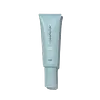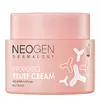What's inside
What's inside
 Key Ingredients
Key Ingredients

 Benefits
Benefits

 Concerns
Concerns

 Ingredients Side-by-side
Ingredients Side-by-side

C18-38 Alkyl Hydroxystearoyl Stearate
EmollientIsopropyl Myristate
EmollientCaprylic/Capric Triglyceride
MaskingWater
Skin ConditioningSimmondsia Chinensis Seed Oil
EmollientPolyglyceryl-10 Laurate
Skin ConditioningAscorbyl Glucoside
AntioxidantLactococcus Ferment Lysate
Skin ConditioningNiacinamide
SmoothingCeramide NP
Skin ConditioningMyristoyl Pentapeptide-16
Skin ConditioningCholesterol
EmollientCeramide AP
Skin ConditioningPhytosphingosine
Skin ConditioningCeramide EOP
Skin ConditioningAllantoin
Skin ConditioningSqualane
EmollientTocopheryl Acetate
AntioxidantBisabolol
MaskingSodium Lauroyl Lactylate
EmulsifyingXanthan Gum
EmulsifyingCarbomer
Emulsion StabilisingPolyglyceryl-3 Polyricinoleate
EmulsifyingCholecalciferol
Camellia Sinensis Leaf Extract
AntimicrobialButylene Glycol
HumectantHydroxyphenyl Propamidobenzoic Acid
Skin ConditioningPentylene Glycol
Skin Conditioning4-T-Butylcyclohexanol
MaskingBeta-Glucan
Skin ConditioningC18-38 Alkyl Hydroxystearoyl Stearate, Isopropyl Myristate, Caprylic/Capric Triglyceride, Water, Simmondsia Chinensis Seed Oil, Polyglyceryl-10 Laurate, Ascorbyl Glucoside, Lactococcus Ferment Lysate, Niacinamide, Ceramide NP, Myristoyl Pentapeptide-16, Cholesterol, Ceramide AP, Phytosphingosine, Ceramide EOP, Allantoin, Squalane, Tocopheryl Acetate, Bisabolol, Sodium Lauroyl Lactylate, Xanthan Gum, Carbomer, Polyglyceryl-3 Polyricinoleate, Cholecalciferol, Camellia Sinensis Leaf Extract, Butylene Glycol, Hydroxyphenyl Propamidobenzoic Acid, Pentylene Glycol, 4-T-Butylcyclohexanol, Beta-Glucan
Water
Skin ConditioningLactobacillus Ferment Lysate 14.3%
Skin ConditioningButylene Glycol
HumectantPropanediol
SolventIsopentyldiol
HumectantDimethicone
EmollientCyclopentasiloxane
EmollientGlycerin
HumectantNiacinamide
SmoothingHydrogenated Poly(C6-14 Olefin)
EmollientCyclohexasiloxane
Emollient1,2-Hexanediol
Skin ConditioningPEG-240/Hdi Copolymer Bis-Decyltetradeceth-20 Ether
StabilisingButyrospermum Parkii Butter
Skin ConditioningPolyglyceryl-10 Myristate
Skin ConditioningPolyglyceryl-2 Stearate
EmulsifyingHydroxyethyl Acrylate/Sodium Acryloyldimethyl Taurate Copolymer
Emulsion StabilisingGlyceryl Stearate
EmollientStearyl Alcohol
EmollientEthylhexylglycerin
Skin ConditioningAdenosine
Skin ConditioningBetaine
HumectantAllantoin
Skin ConditioningTrehalose
HumectantPanthenol
Skin ConditioningSodium PCA
HumectantBifida Ferment Lysate
Skin ConditioningSodium Lactate
BufferingGossypium Herbaceum Extract
Skin ConditioningArginine
MaskingAspartic Acid
MaskingPCA
HumectantStreptococcus Thermophilus Ferment
HumectantCaprylic/Capric Triglyceride
MaskingGlycine
BufferingAlanine
MaskingLecithin
EmollientRoyal Jelly Extract
Skin ConditioningMilk Extract
Skin ConditioningPolysorbate 20
EmulsifyingPropolis Extract
Skin ConditioningHydrolyzed Collagen
EmollientLactose
HumectantArtemisia Capillaris Extract
Simmondsia Chinensis Seed Oil
EmollientHelianthus Annuus Seed Oil
EmollientSerine
MaskingValine
MaskingIsoleucine
Skin ConditioningThreonine
Proline
Skin ConditioningPhenylalanine
MaskingHistidine
HumectantHyaluronic Acid
HumectantLupinus Albus Seed Extract
Skin ConditioningSodium Ascorbyl Phosphate
AntioxidantPhospholipids
Skin ConditioningPhytosphingosine
Skin ConditioningCopper Tripeptide-1
Skin ConditioningCeramide NP
Skin ConditioningLactic Acid
BufferingCholesterol
EmollientHydrolyzed Hyaluronic Acid
HumectantMadecassoside
AntioxidantTocopherol
AntioxidantSodium Hyaluronate
HumectantSqualane
EmollientTripeptide-1
Skin ConditioningPalmitoyl Tripeptide-1
Skin ConditioningTripeptide-2
Skin ConditioningHexapeptide-11
Skin ConditioningPhytosterols
Skin ConditioningDunaliella Salina Extract
Skin ConditioningAcetyl Hexapeptide-8
HumectantPalmitoyl Tetrapeptide-7
Skin ConditioningPalmitoyl Pentapeptide-4
Skin ConditioningHexapeptide-9
Skin ConditioningNonapeptide-1
Skin ConditioningDisodium EDTA
Parfum
MaskingWater, Lactobacillus Ferment Lysate 14.3%, Butylene Glycol, Propanediol, Isopentyldiol, Dimethicone, Cyclopentasiloxane, Glycerin, Niacinamide, Hydrogenated Poly(C6-14 Olefin), Cyclohexasiloxane, 1,2-Hexanediol, PEG-240/Hdi Copolymer Bis-Decyltetradeceth-20 Ether, Butyrospermum Parkii Butter, Polyglyceryl-10 Myristate, Polyglyceryl-2 Stearate, Hydroxyethyl Acrylate/Sodium Acryloyldimethyl Taurate Copolymer, Glyceryl Stearate, Stearyl Alcohol, Ethylhexylglycerin, Adenosine, Betaine, Allantoin, Trehalose, Panthenol, Sodium PCA, Bifida Ferment Lysate, Sodium Lactate, Gossypium Herbaceum Extract, Arginine, Aspartic Acid, PCA, Streptococcus Thermophilus Ferment, Caprylic/Capric Triglyceride, Glycine, Alanine, Lecithin, Royal Jelly Extract, Milk Extract, Polysorbate 20, Propolis Extract, Hydrolyzed Collagen, Lactose, Artemisia Capillaris Extract, Simmondsia Chinensis Seed Oil, Helianthus Annuus Seed Oil, Serine, Valine, Isoleucine, Threonine, Proline, Phenylalanine, Histidine, Hyaluronic Acid, Lupinus Albus Seed Extract, Sodium Ascorbyl Phosphate, Phospholipids, Phytosphingosine, Copper Tripeptide-1, Ceramide NP, Lactic Acid, Cholesterol, Hydrolyzed Hyaluronic Acid, Madecassoside, Tocopherol, Sodium Hyaluronate, Squalane, Tripeptide-1, Palmitoyl Tripeptide-1, Tripeptide-2, Hexapeptide-11, Phytosterols, Dunaliella Salina Extract, Acetyl Hexapeptide-8, Palmitoyl Tetrapeptide-7, Palmitoyl Pentapeptide-4, Hexapeptide-9, Nonapeptide-1, Disodium EDTA, Parfum
 Reviews
Reviews

Ingredients Explained
These ingredients are found in both products.
Ingredients higher up in an ingredient list are typically present in a larger amount.
Allantoin is a soothing ingredient known for its protective and moisturizingg properties. Because of this, it is often added to products with strong active ingredients.
Studies show higher concentrations of this ingredient can promote wound healing.
Though it can be derived from the comfrey plant, allantoin is produced synthetically for cosmetic products to ensure purity.
Learn more about AllantoinButylene Glycol (or BG) is used within cosmetic products for a few different reasons:
Overall, Butylene Glycol is a safe and well-rounded ingredient that works well with other ingredients.
Though this ingredient works well with most skin types, some people with sensitive skin may experience a reaction such as allergic rashes, closed comedones, or itchiness.
Learn more about Butylene GlycolThis ingredient is an emollient, solvent, and texture enhancer. It is considered a skin-softener by helping the skin prevent moisture loss.
It helps thicken a product's formula and makes it easier to spread by dissolving clumping compounds.
Caprylic Triglyceride is made by combining glycerin with coconut oil, forming a clear liquid.
While there is an assumption Caprylic Triglyceride can clog pores due to it being derived from coconut oil, there is no research supporting this.
Learn more about Caprylic/Capric TriglycerideCeramide NP is a type of ceramide and formally known as ceramide 3.
Ceramides are intercellular lipids naturally found in our skin that bonds dead skin cells together to create a barrier. They are known for their ability to hold water and thus are a great ingredient for dry skin.
Ceramides are an important building block for our skin barrier. A stronger barrier helps the skin look more firm and hydrated. By bolstering the skin ceramides act as a barrier against irritating ingredients. This can help with inflammation as well.
If you would like to eat ceramides, sweet potatoes contain a small amount.
Read more about other common types of ceramides here:
Ceramide AP
Ceramide EOP
Cholesterol is a class of organic molecules called lipids. It helps hydrate your skin and is essential to having a healthy skin barrier.
Our skin naturally contains cholesterol in the outermost layer. Besides cholesterol, it also contains ceramides and fatty acids. Cholesterol makes up about 1/4 of your skin's outer layer and barrier. Your skin barrier is responsible for keeping allergens and microbes out. Having a healthy skin barrier is also responsible for keeping your skin firm and plump.
Our bodies use cholestrol to create vitamin D, steroid hormones, and more.
Learn more about CholesterolNiacinamide is a multitasking form of vitamin B3 that strengthens the skin barrier, reduces pores and dark spots, regulates oil, and improves signs of aging.
And the best part? It's gentle and well-tolerated by most skin types, including sensitive and reactive skin.
You might have heard of "niacin flush", or the reddening of skin that causes itchiness. Niacinamide has not been found to cause this.
In very rare cases, some individuals may not be able to tolerate niacinamide at all or experience an allergic reaction to it.
If you are experiencing flaking, irritation, and dryness with this ingredient, be sure to double check all your products as this ingredient can be found in all categories of skincare.
When incorporating niacinamide into your routine, look out for concentration amounts. Typically, 5% niacinamide provides benefits such as fading dark spots. However, if you have sensitive skin, it is better to begin with a smaller concentration.
When you apply niacinamide to your skin, your body converts it into nicotinamide adenine dinucleotide (NAD). NAD is an essential coenzyme that is already found in your cells as "fuel" and powers countless biological processes.
In your skin, NAD helps repair cell damage, produce new healthy cells, support collagen production, strengthen the skin barrier, and fight environmental stressors (like UV and pollution).
Our natural NAD levels start to decline with age, leading to slower skin repair, visible aging, and a weaker skin barrier. By providing your skin niacinamide, you're recharging your skin's NAD levels. This leads to stronger, healthier, and younger looking skin.
Another name for vitamin B3 is nicotinamide. This vitamin is water-soluble and our bodies don't store it. We obtain Vitamin B3 from either food or skincare. Meat, fish, wheat, yeast, and leafy greens contain vitamin B3.
The type of niacinamide used in skincare is synthetically created.
Learn more about NiacinamidePhytosphingosine is a phospholipid naturally found in our skin as a building block for ceramides.. It helps moisturize, soothe, and protect skin.
Phytosphingosine contributes to your skin's natural moisturizing factor (NMF). The NMF is responsible for hydration, a strong barrier, and plasticity. Our NMF decreases with age. Increasing NMF leads to more healthy and hydrated skin.
Studies show products formulated with NMF ingredients help strengthen our skin's barrier. Having a healthy skin barrier reduces irritation and increases hydration. Our skin barrier is responsible for having plump and firm skin. It also helps protect our skin against infection, allergies, and inflammation.
Fun fact: Phytosphingosine is abundant in plants and fungi.
More ingredients that help boost collagen in skin:
Learn more about PhytosphingosineThis oil comes from the seeds of the desert shrub called Jojoba. It is more commonly known as jojoba oil, a non-comedogenic oil.
Jojoba oil does not contain fragrance and has many fatty-acids, making it a great soothing ingredient.
It also contains Vitamin E, a great moisturizing ingredient. Vitamin E is also an antioxidant and protects your skin against oxidative damage.
This ingredient humectant properties, meaning it helps draw moisture from the air. This helps keep your skin hydrated.
While jojoba has antibacterial properties, it is only able to kill some strains of bacteria.
Studies also show it helps in wound healing. In fact, Indigenous cultures have used jojoba as a moisturizer and to help treat burns for centuries.
Fun fact: Jojoba oil similar to natural human skin sebum, so it has a great effect on dry skin. It is also promising with helping to regulate sebum production.
Due to its fatty acid content, Jojoba oil may not be fungal acne safe. We recommend speaking with a professional if you have any concerns.
Learn more about Simmondsia Chinensis Seed OilSqualane is an emollient that helps the skin hold onto moisture. It's an oily liquid that occurs naturally in certain types of fish and plant oils.
Because squalane boosts hydration in the skin, it also comes with plenty of benefits: it is an antioxidant and can help fight free radicals and skin damage. Squalane is also found to have a detoxifying effect when applied.
Squalane comes from squalene, which occurs naturally within the sebum of our skin. It is one of the oils our skin produces to keep itself hydrated. Squalane is the hydrogenated version of squalene and has a longer shelf life.
Research shows that squalane is non-irritating (even at 100% concentration).
In general, it's a fantastic ingredient. It does a great job at hydrating the skin, and it's suitable for those with sensitive skin.
The source of squalane may impact malassezia / fungal acne. This is because olive oil derived squalane can contain impurities such as fatty acids and plant waxes. Sugarcane derived squalane is recommended for anyone with malassezia concerns.
Is squalane vegan?
This depends on the source. Squalane can be derived from both plants and animals. Most squalane used in skincare comes from plants.
Please note: the source of squalane is only known if disclosed by the brand. We recommend reaching out to the brand if you have any questions about their squalane.
Read more about squalene with an "e".
Is squalane an oil?
Squalane is often called an oil, but it’s technically not; it’s a hydrocarbon, meaning it’s only made of carbon and hydrogen, unlike true oils which are triglycerides made of fatty acids and glycerol.
The term “oil-free” isn’t regulated, so companies can define it however they want. Some exclude all oils, while others just avoid mineral oil or comedogenic oils.
While some people avoid oils thinking they cause breakouts, the right kind of oil (or oil-like ingredient like squalane) can actually help balance and hydrate your skin. It’s worth testing out simple oils or squalane to see what works best for your skin.
Learn more about SqualaneWater. It's the most common cosmetic ingredient of all. You'll usually see it at the top of ingredient lists, meaning that it makes up the largest part of the product.
So why is it so popular? Water most often acts as a solvent - this means that it helps dissolve other ingredients into the formulation.
You'll also recognize water as that liquid we all need to stay alive. If you see this, drink a glass of water. Stay hydrated!
Learn more about Water